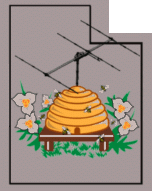 |
Possible issues related to the 11 January, 2020 upgrade:
Work-arounds and suggestions |
Expect the occasional outage as adjustments are made. For
more information about recent changes, go to the Latest News page.
Do you keep ending up on the landing page or go nowhere when you try to go to one of the Northern Utah
WebSDRs or can't bring up a WebSDR?
If you keep ending up on the landing page or can't bring anything up at all, you are
probably
using an older stored bookmark/shortcut/favorite: Please use
the
links below to go to the respective WebSDR and update your bookmark
accordingly.
- WebSDR1
("Yellow")
- Covers the 160,
80/75,
60
and 40
meter amateur bands, AM
broadcast, the 120,
60
and 49
meter shortwave
broadcast bands.
- WebSDR2
("Green")
- Covers the 30,
20,
17,
15,
12,
10
and 6
meter (bottom 1 MHz)
amateur bands and the 31
and 13
meter shortwave broadcast bands.
- WebSDR3
("Blue")
- Covers the 2200,
630
and 2 meter
amateur bands, the 90,
41,
25
and 19
meter shortwave
broadcast bands, the "1750
Meter" band
and it provides a back-up for WebSDR1's coverage of the very popular 80/75 and 40 meter amateur
bands.
To users of the "Mobile" versions of the Northern Utah WebSDR servers:
The links to the mobile versions have changed and are as follows - please update your bookmarks/favorites:
Find a broken link?
If, after trying the above, you find
a
link on this page or one of the Northern Utah WebSDRs that doesn't work
- or if you suddenly cannot bring up a WebSDR anymore - let us know via email at sdrinfo@sdrutah.org.
Important
note for users of providers/firewalls/ISPs that may limit access to non-standard web page ports:
Some Internet providers (wireless/phone Internet, WiFi
hot spots, corporate networks)
only allow web page connections using port 80, the standard unencrypted web (HTTP) port, blocking HTTP
connections on other ports. Because WebSDRs do not
natively use
port 80 it may not be possible to connect via some of these network using standard WebSDR ports.
As a work-around, WebSDR #1 can also be accessed via port 80
using this link
- but this is not currently available for WebSDR #2 and WebSDR #3 or
for the KiwiSDRs and any attempts will land you on WebSDR #1.
It may be possible to use a VPN service as
a work-around if you have port restrictions.
Contact
information:
If, after the recent changes, you can't seem to connect to a
WebSDR, if you wish to find out how you can contribute to this
project, or if
you have any questions/comments that weren't answered on the "latest
news", "FAQ" or "technical
info" pages, you may
send an email to the following address:
sdrinfo@sdrutah.org.
Alternatively, you can send email/snail-mail to KA7OEI
using the information found at QRZ or the FCC database.
Important:
If you wish to contact us,
please avoid using an email
service that has one of those "Please fill in this form to reply" type
of SPAM filters.
If you really
want a reply, please have the courtesy to allow us to do so without
having to fill out a form and supply extra personal
information to who knows where, etc. - I wasn't planning to sell or
give out your
email address, anyway!
Additional information:
- For answers to possible questions, visit the FAQ
page (link).
- For more information about the WebSDR project in general -
including information about other WebSDR servers worldwide and
additional technical information - go to http://www.websdr.org
Go to the Northern Utah WebSDR
landing page

